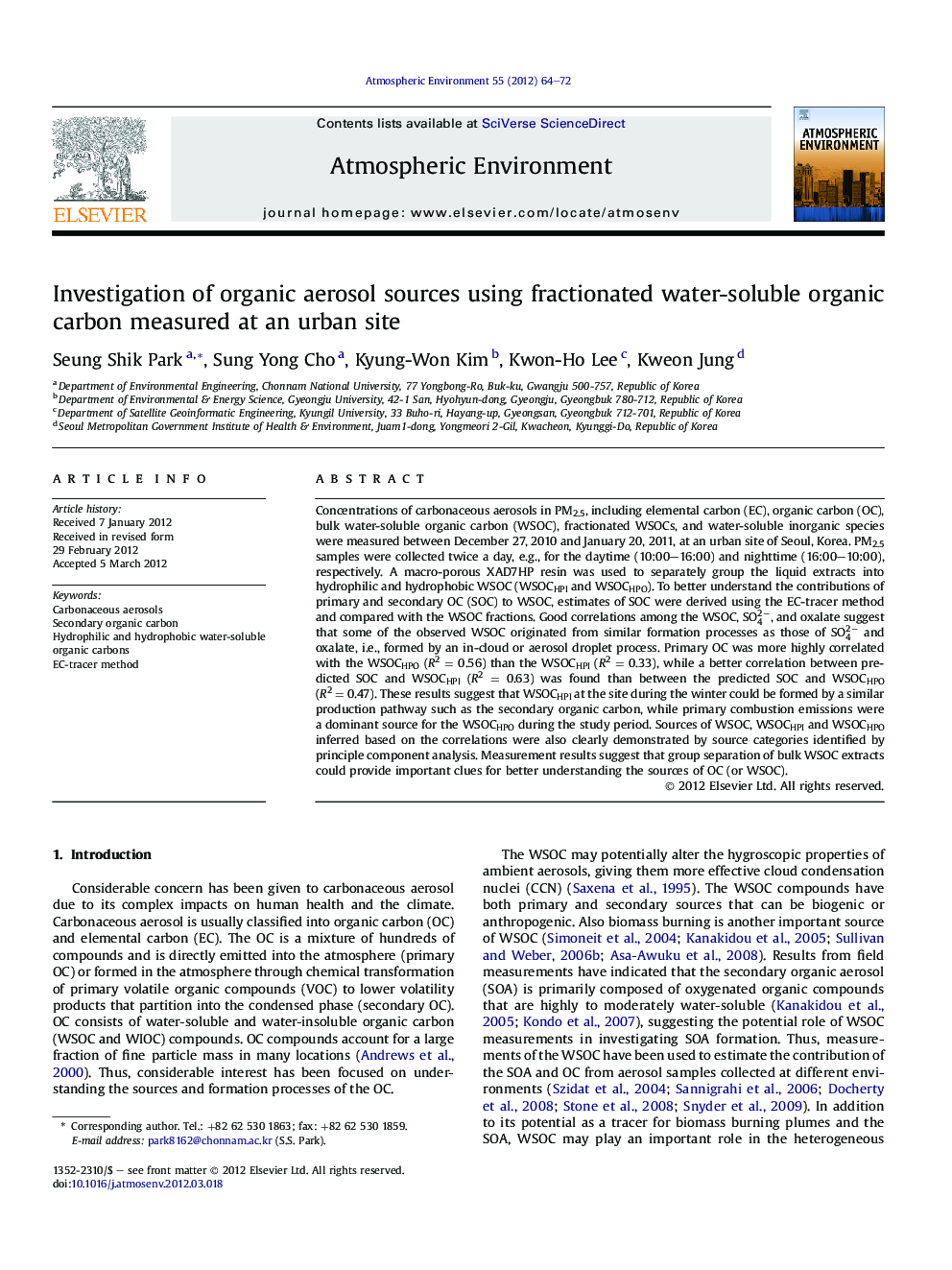| Article ID | Journal | Published Year | Pages | File Type |
|---|---|---|---|---|
| 4438919 | Atmospheric Environment | 2012 | 9 Pages |
Concentrations of carbonaceous aerosols in PM2.5, including elemental carbon (EC), organic carbon (OC), bulk water-soluble organic carbon (WSOC), fractionated WSOCs, and water-soluble inorganic species were measured between December 27, 2010 and January 20, 2011, at an urban site of Seoul, Korea. PM2.5 samples were collected twice a day, e.g., for the daytime (10:00–16:00) and nighttime (16:00–10:00), respectively. A macro-porous XAD7HP resin was used to separately group the liquid extracts into hydrophilic and hydrophobic WSOC (WSOCHPI and WSOCHPO). To better understand the contributions of primary and secondary OC (SOC) to WSOC, estimates of SOC were derived using the EC-tracer method and compared with the WSOC fractions. Good correlations among the WSOC, SO42−, and oxalate suggest that some of the observed WSOC originated from similar formation processes as those of SO42− and oxalate, i.e., formed by an in-cloud or aerosol droplet process. Primary OC was more highly correlated with the WSOCHPO (R2 = 0.56) than the WSOCHPI (R2 = 0.33), while a better correlation between predicted SOC and WSOCHPI (R2 = 0.63) was found than between the predicted SOC and WSOCHPO (R2 = 0.47). These results suggest that WSOCHPI at the site during the winter could be formed by a similar production pathway such as the secondary organic carbon, while primary combustion emissions were a dominant source for the WSOCHPO during the study period. Sources of WSOC, WSOCHPI and WSOCHPO inferred based on the correlations were also clearly demonstrated by source categories identified by principle component analysis. Measurement results suggest that group separation of bulk WSOC extracts could provide important clues for better understanding the sources of OC (or WSOC).
► Sources of fractionated water-soluble organic carbon (WSOC) were examined. ► Primary combustion emissions were dominant sources of hydrophobic WSOC. ► Hydrophilic WSOC could be formed by processes similar to SO42− and secondary OC.
